Cockpit…
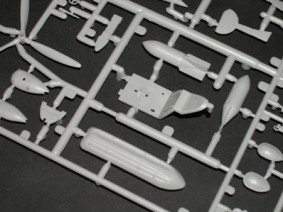
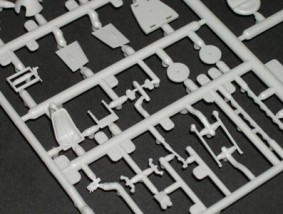
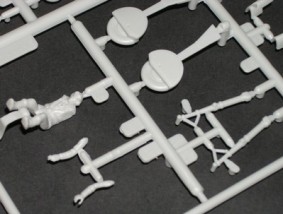 Moving aft the cockpit tub at first glance looks sparse, but in fact much of the detail you’d expect to find like control column, trim wheels and so on is in fact included but is located around the sprue trees. So I suspect that the cockpit will make up into a perfectly reasonable representation of the real thing. The light tones of the RLM 02 grey-green interior colour should show up the raised detail well. I’m not sure about the shape of the seat though, and this may look a little better with some light sanding. It’s the way the side looks pinched in at the top that’s slightly dubious and so I would check your references on this one. A pretty straightforward fix though with sanding as I say.
Moving aft the cockpit tub at first glance looks sparse, but in fact much of the detail you’d expect to find like control column, trim wheels and so on is in fact included but is located around the sprue trees. So I suspect that the cockpit will make up into a perfectly reasonable representation of the real thing. The light tones of the RLM 02 grey-green interior colour should show up the raised detail well. I’m not sure about the shape of the seat though, and this may look a little better with some light sanding. It’s the way the side looks pinched in at the top that’s slightly dubious and so I would check your references on this one. A pretty straightforward fix though with sanding as I say.
The moulded in seat harness is a bit unconvincing but will be easily improved by scraping off the raised detail and adding your own – either an etched set of belts or scratch your own from metal foil (old wine bottle tops work really well) and are a cheaper alternative.
If you like your pilot figures, then you’ll find Maj. Adolf Galland or one of the other ‘experten’ on the sprue and he’s nicely moulded, with detail a little soft.
Something to watch inside the cockpit fuselage halves are some prominent ejector pin marks and these need to be removed by sanding down with sanding sticks or wet and dry abrasive paper (dark grey sanding paper found in painting and decorating or car repair product isles of stores).
Undercarriage…
Good options included here with separate units designed for raised or lowered gear and also a nice pair of slightly bulged main wheel tyres that also feature the often seen groove detail. The main gear legs will benefit from adding a brake line down each one – a prominent feature of the Bf-109.
Control surfaces…
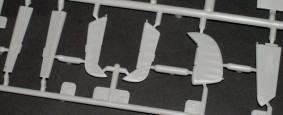 The fabric control surfaces fitted to early Bf-109s has been captured well by Airfix. With a little rough-sanding to help create the fabric effect, they should look good under paint.
The fabric control surfaces fitted to early Bf-109s has been captured well by Airfix. With a little rough-sanding to help create the fabric effect, they should look good under paint.
Clear parts…
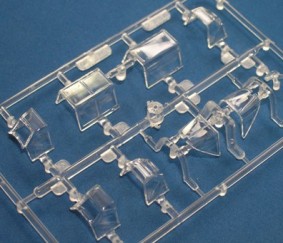 Nice looking these – both armoured and non-armoured windscreens are included as are the two types of canopy ‘square’ and ‘round’ edged. The latter more usually seen on the E-1-3 and the square on the E-4 and later, but as with many aircraft in WWII Luftwaffe service there were exceptions. So depending on the version you choose to finish your 109 in, check the paint guide for an accurate steer.
Nice looking these – both armoured and non-armoured windscreens are included as are the two types of canopy ‘square’ and ‘round’ edged. The latter more usually seen on the E-1-3 and the square on the E-4 and later, but as with many aircraft in WWII Luftwaffe service there were exceptions. So depending on the version you choose to finish your 109 in, check the paint guide for an accurate steer.
Instructions, decals and painting guide…
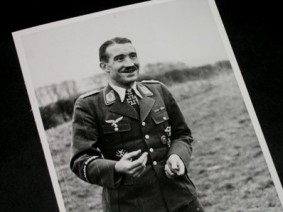
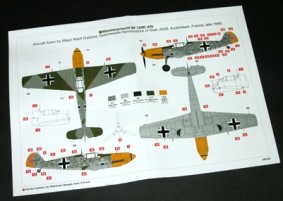
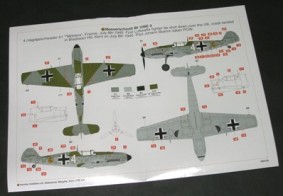
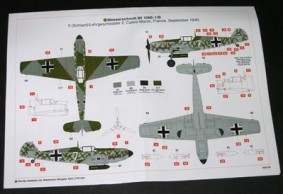
I guess Adolf Galland just had to feature here and an E-4/N that he flew when with JG.26 features prominently with its yellow nose. Two other aircraft are featured on the colourful decal sheet: A Bf-109E-3 from 4./ Jagdgeschwader 51 “Molders”, France, 8th July 1940. This was the first Luftwaffe fighter to be shot down over the UK and crash landed in Bladbean Hill, Kent. The third option is Bf-109E-1/B II (Schlact)/:Lehrgeschwader 2, Calais-Marck, France, September 1940. in that distinctive ‘criss-cross’ pattern on the fuselage sides – a nice little challenge for those of us with airbrushes!